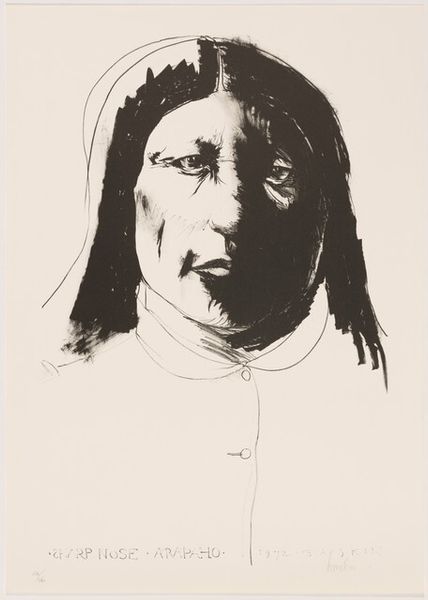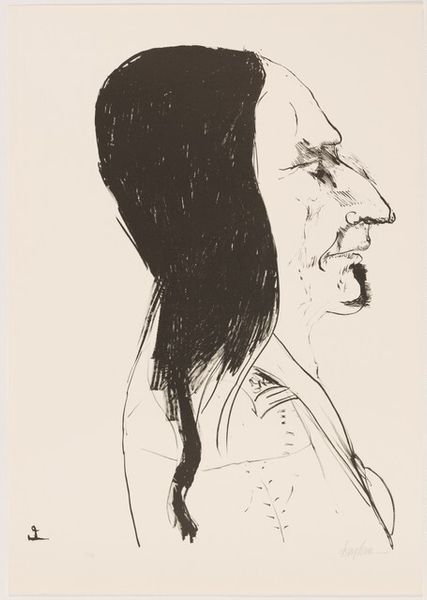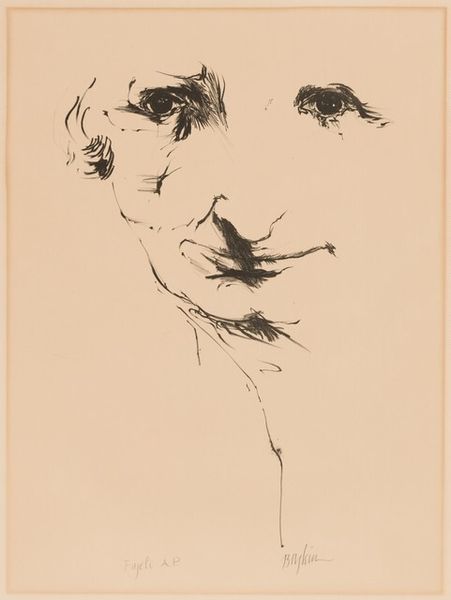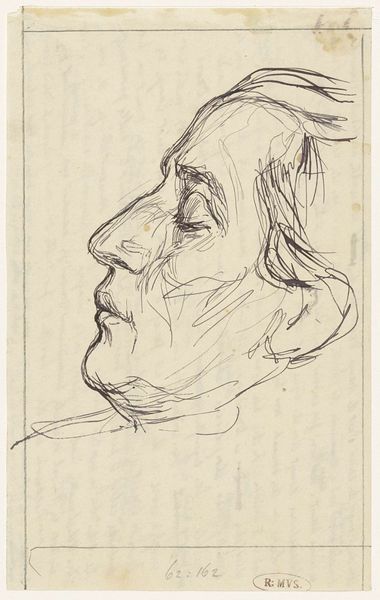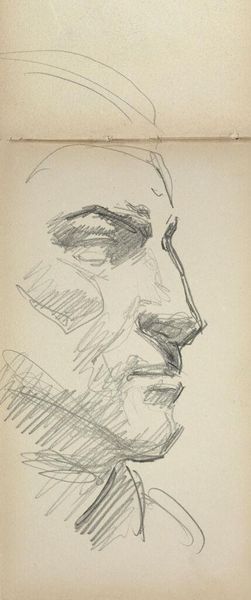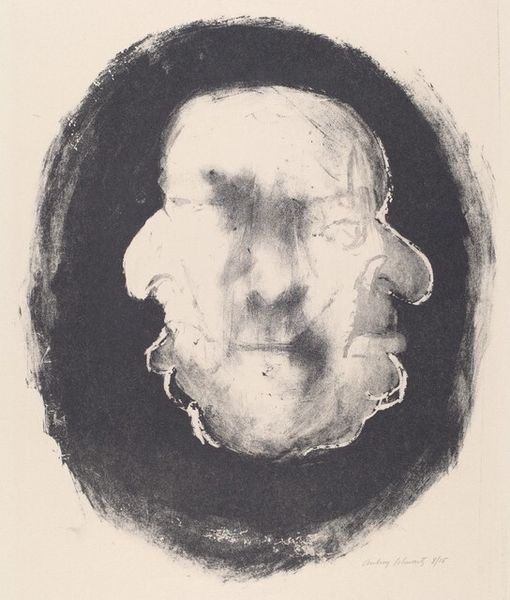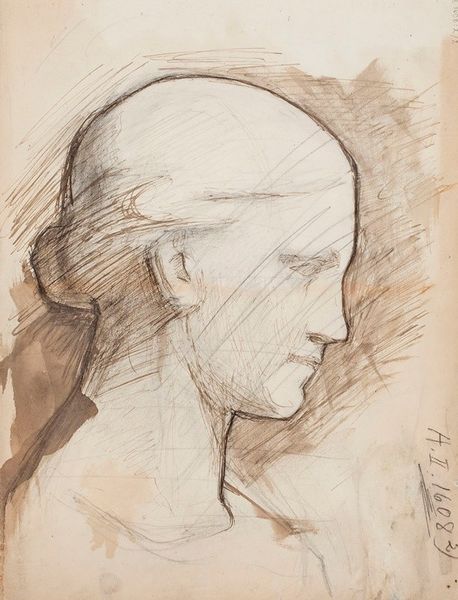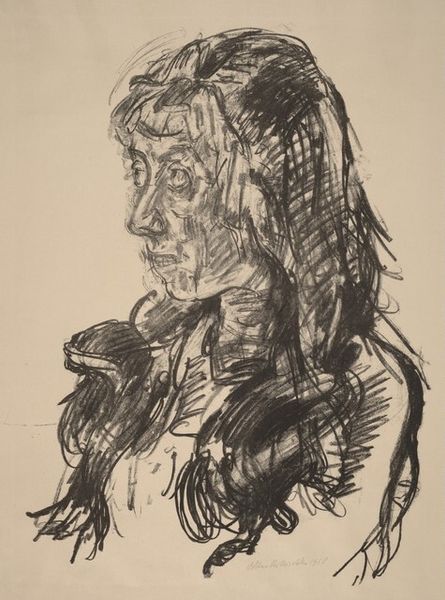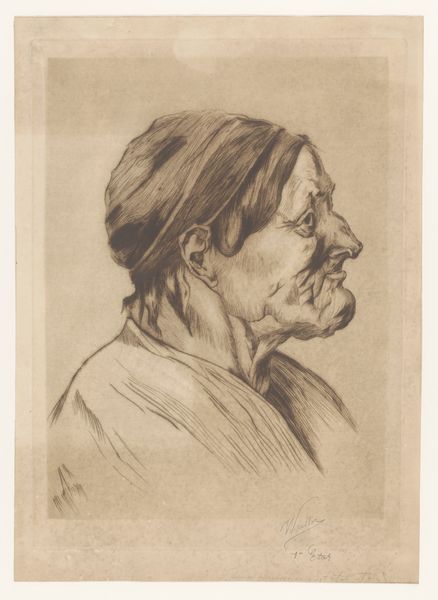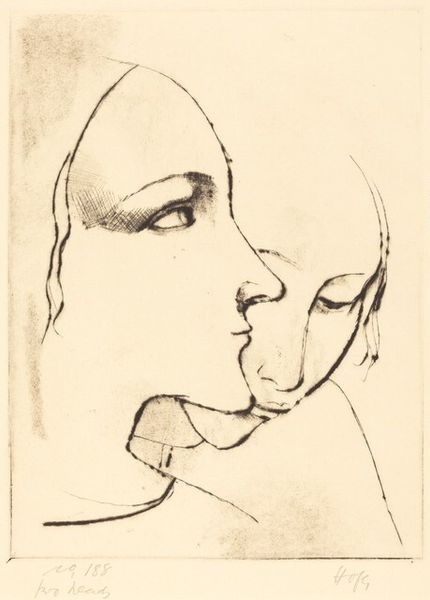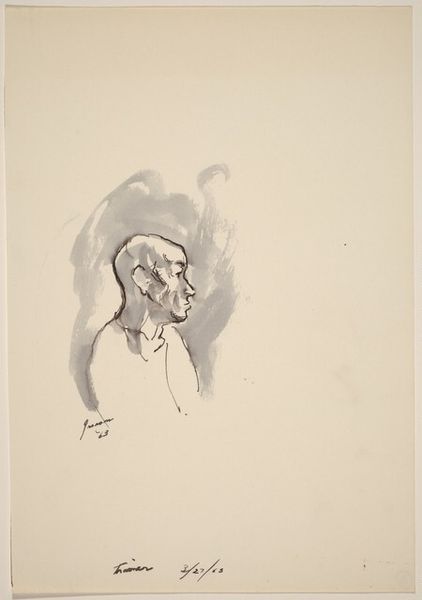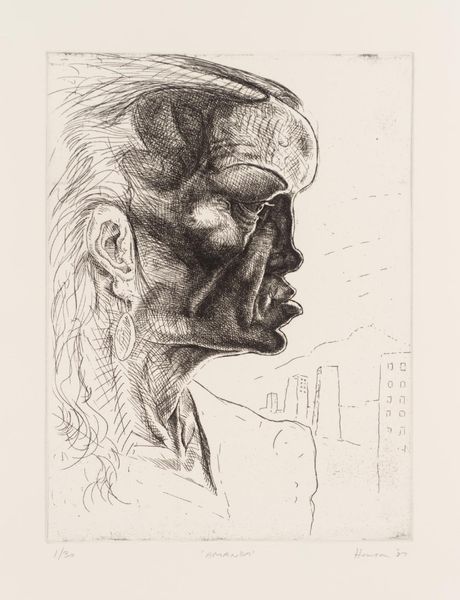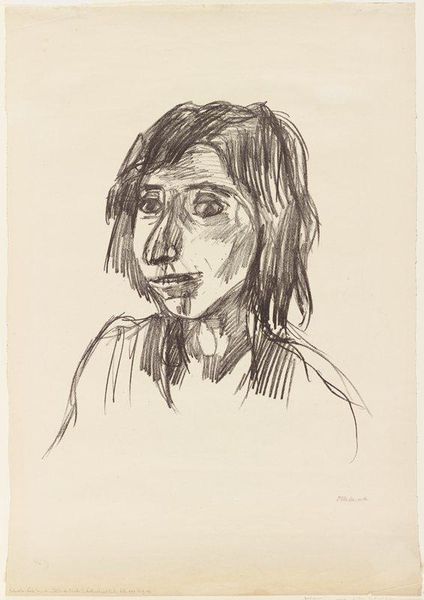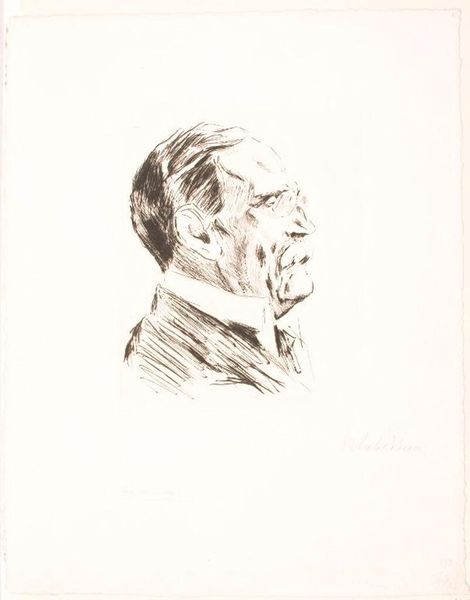
drawing, lithograph, print, ink
#
portrait
#
drawing
#
ink drawing
#
lithograph
# print
#
caricature
#
ink
#
pencil drawing
#
portrait drawing
Dimensions: sheet: 88.9 × 63.5 cm (35 × 25 in.)
Copyright: National Gallery of Art: CC0 1.0
Curator: This is Leonard Baskin's "Hidatsa Medicine Man," created in 1972 using ink, and presented here as a print. Editor: The stark black ink on the white background creates such a striking image. The figure is incredibly dignified, despite the somewhat unsettling expressive lines defining his face. Curator: Baskin's work often explores themes of mortality and the human condition. His interest in indigenous cultures, here the Hidatsa people, is significant, reflecting the relationship between culture, spirituality, and the impact of colonization. The “medicine man,” or spiritual leader, embodies cultural continuity and resistance against external pressures. Editor: Absolutely, and technically speaking, the bold, almost brutal, strokes create a sense of immediacy and power. Notice how the lines vary in thickness and direction to give dimension to the profile while maintaining a flattened perspective overall. Curator: The visible marks from the printmaking process give it an aura of authenticity. But it also begs the question, as a non-Indigenous artist, what are Baskin’s ethical responsibilities in portraying such a culturally significant figure? Can representation truly be respectful, or does it inevitably contribute to appropriation? Editor: That tension you describe makes the artwork complex. What is evident is the artist’s close study of form—look at the subject’s jewelry and the lines that emulate hair—with a powerful gestural economy to delineate both literal and figurative qualities of the represented person. Curator: Indeed. His intense gaze and noble posture project resilience in the face of historical trauma, acknowledging their enduring presence and value in contemporary society, and the ongoing fight for cultural recognition. Editor: Seeing it this way helps clarify some of my reservations with Baskin's technique. Perhaps those harsh lines were employed in an attempt to depict an equally tough character who prevails despite the forces opposing him. Thank you for pointing out the historical factors behind the portrait! Curator: It is crucial to consider both historical context and aesthetic value when experiencing this image. Editor: An interesting perspective to conclude our discussion—the fusion of form and history in shaping our understanding.
Comments
No comments
Be the first to comment and join the conversation on the ultimate creative platform.
